Email And Sharing Information
- Locate information from websites
- Copy and paste information from websites to a word processing application
- Save copied information in Word processing
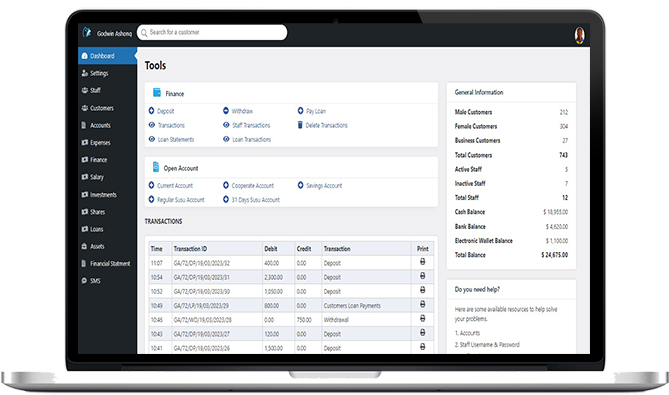
Finwaver.com
Your school or business runs better on finwaver.com. Sign up for free one (1) week try.
Explanations to week content
The internet could be used to search for information. Throughout your academic years, you will be using the internet for research work.
It is therefore necessary to learn how to locate information on the internet and as well document those information in your report.
In this week's lesson, we will learn how to locate information from websites, copy and paste to a word processing.
The fact that you are accessing kuulchat.com means you are on the internet. To search for information on the internet you need to be connected to the internet.
If you already know where to locate your information, simply type the website address in the web browser.
If you don't have any idea where the information can be found, use a search engine to search for the information. Some of the search engines include:
The most popular search engine is Google (google.com)
Locating information on the internet
You need a device (computer or phone) connected to the internet and a web browser installed on the device.
A web browser is a tool which enables computer users to display content of web pages on their device (computer or phone).
Parts of a web browser
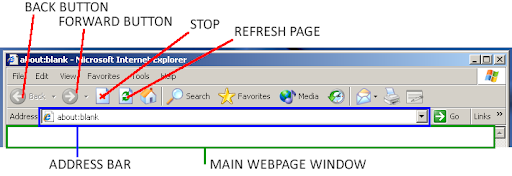
Figure: Parts of a web browser
Web Address
The web address contains information about the location of the webpage. It is also known as the URL (uniform resource locator).
Like the address for your home, a web address organizes information about a webpage's location in a predictable way.
If you already know the website address you are trying to locate the information, simply type the website address in the address bar of the web browser.
For instance if you are asked to find the contact number of Kuulchat Media and you already know that Kuulchat Media's web address is kuulchatmedia.com , you simply type kuulchatmedia.com in the address bar of the web browser and press the enter key.
Figure: kuulchatmedia.com in the address bar
If you don't know the website address, you have to use a search engine to locate the website on the internet. In that case simply type for instance google.com in the address bar, press the enter key and enter the search phrase in the search box (e.g Kuulchat Media).
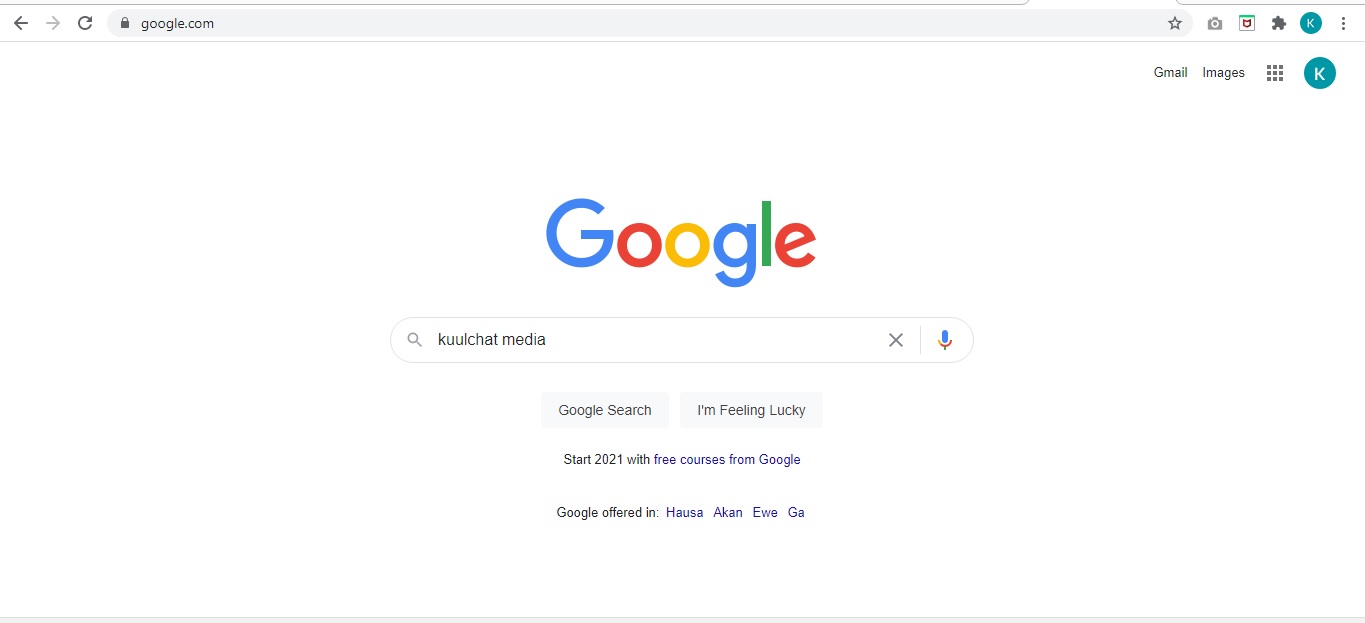
Figure: Kuulchat media in the search box after visiting google.com website
You would be shown links base on your search. Read through the links and click on the appropriate link that matches what you are looking for.
If you want the link to be opened in a new tab, right click on the link and select open link in new tab. This makes it possible for you to visit each of the result links while the result page is still shown.
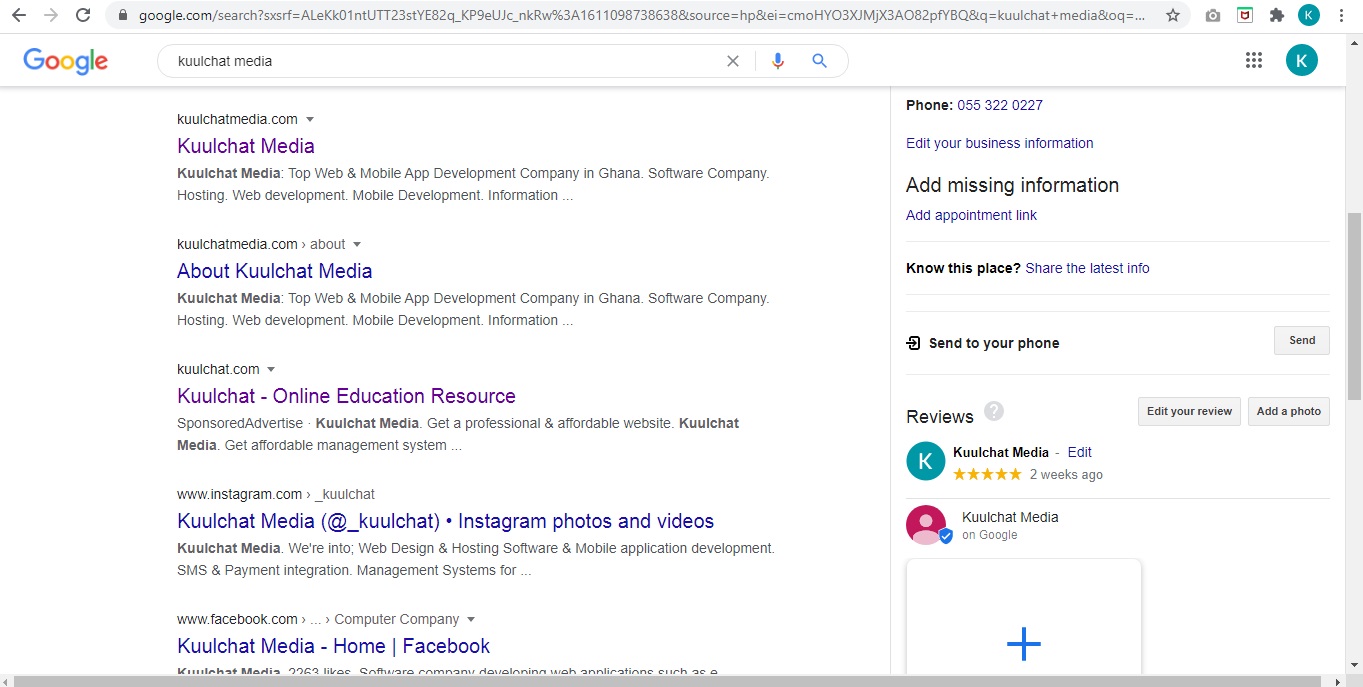
Figure: Result links for kuulchat media search
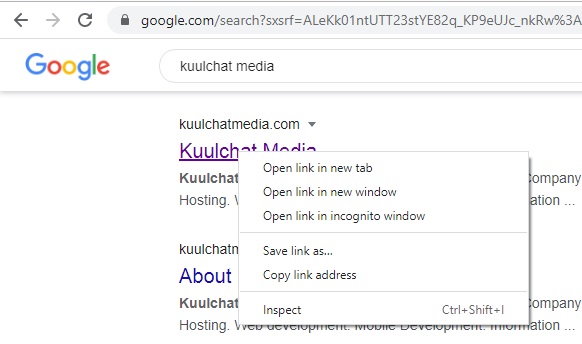
Figure: Opening link in new tab
A hyperlink is defined as an electronic location on a web page that contains jumps to other web pages or files. Most hyperlink is indicated with an underline beneath the text which has hyperlink or the cursor changes from pointer to hand to indicate that text is an hyperlink and once clicked it opens the web page or file.
The contact information of kuulchat media could be seen on the web page but for other company websites, you may have to click on Contact Us link in order to see the contact details.
Using the back and forward buttons
As you can see in the parts of a web browser figure above, the web browser has back and forward buttons.
The back button is used to return to previous page you've visited.
The forward button takes you to the page you just left when you click on the back button.
Copying And Pasting Information From Websites
As a student you would be given a number of assignments that you will have to search on the internet. Once you've found the information, you would have to document and submit your research findings.
To copy and paste from a website follow the steps below:
Alternatives for steps 6 & 7
Simply press ctrl and v keys to paste the copied text. Ctrl+v is the shortcut for paste.
Normally it will maintain the formatting features of the web page it was copied from. To avoid this you can open a notepad application, paste the copied material in it, copy the text again and paste in the Word document.
NOTE
This is only appropriate if you don't want any copied image. Notepad will only keep the text of the copied material when you paste.
You can also format the pasted material instead of pasting in notepad first to remove the website formatting features. To format the pasted material, follow the steps below:

Figure: The paste options
The paste options button always appears when you copy and paste material in a document. The options provide a list of techniques that can be used to format the pasted material.
1. Click on the paste options to see the available options in the list
2. Select the appropriate option to format the pasted material
The options are:
Keep source formatting
This maintains the formatting of the original document where the information was copied from.
Match destination formatting
This changes the formatting of the pasted text to what is in the original document.
Keep text only
This will keep only text and remove all images, tables and formatting features from the copied material.
Saving copied information
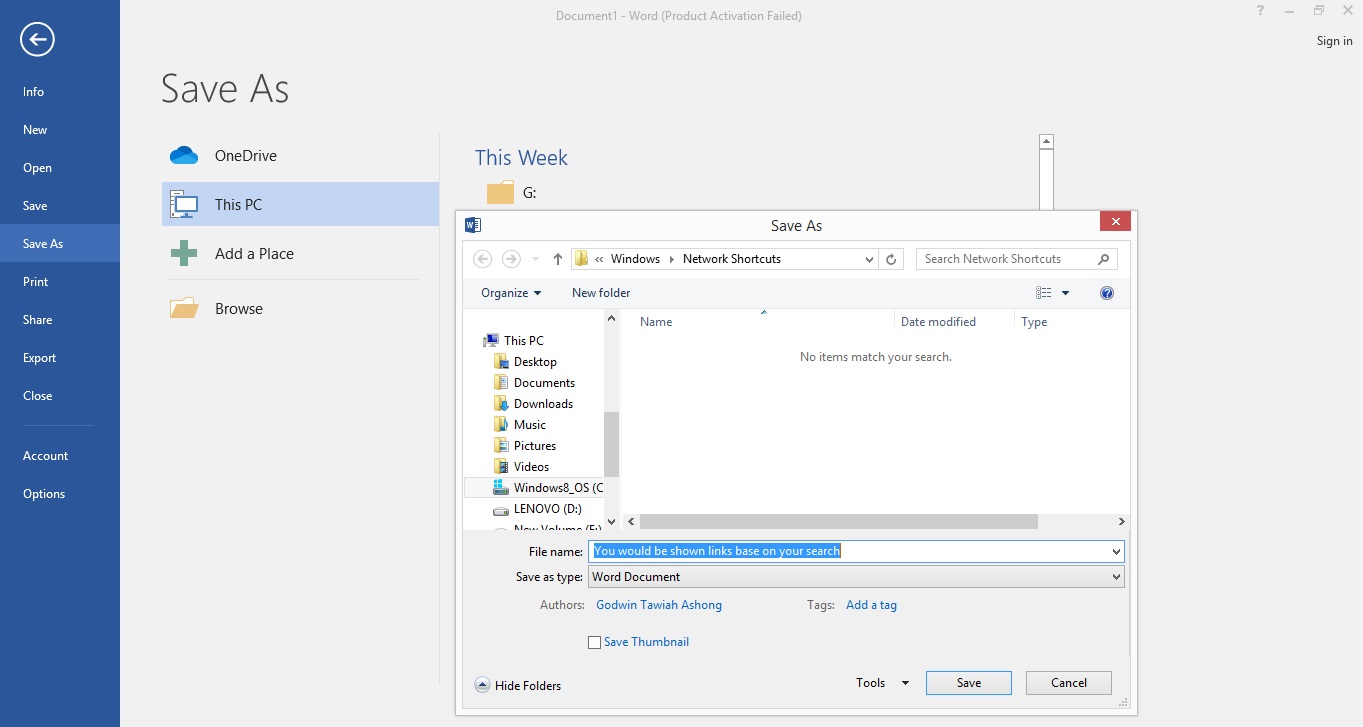
Figure: Saving document the first time
Once you've clicked on the Save button, the document name will then show on the title bar.
If you've already saved the document (given name to the document already), you simply click on the save icon or press Ctrl and S to save the new changes.
Practice
Research and document the biography of Nelson Mandela.
Steps
Practical
Research and document the biography of Kofi Annan.